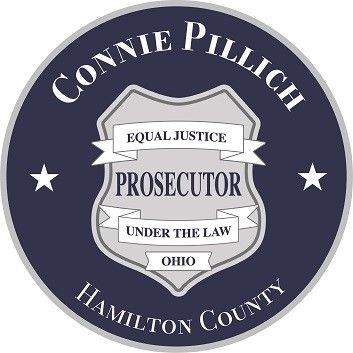State of Ohio v Joseph Paul Franklin
Court TV has the Joseph Paul Franklin trial in it's entirety. CLICK HERE to access those videos.
By the time Joseph Paul Franklin showed up in Cincinnati in 1980, he’d already killed over half a dozen people, firebombed a synagogue, robbed some banks, altered dozens of lives, and kicked off a three-year reign of terror that dotted the Midwest and the Mid-Atlantic with bodies.
But he wanted more. Much more. And in June 1980, Franklin brought his criminality to the Queen City.
June eighth was a balmy, sunny day, with a high of 59 degrees and the first blush of summer still a few weeks away. Cousins Darrell Lane and Dante Evans set out from their neighborhood to the corner store to pick up some snacks. It was Sunday, the day was lazy and quiet, and the cousins were close friends.
But they never came home. Instead, they were murdered—the victims of a sniper shooting.
Darrell was thirteen. Dante was fourteen.
The case sparked one of the largest manhunts in Cincinnati history, and the public demanded resolution. While investigators settled quickly on Joseph Paul Franklin as a suspect, the lack of evidence made investigators believe they could not get a conviction without a confession.
Seventeen years passed.
In spring 1997, investigators enlisted Melissa Powers in their renewed efforts around the case. She convinced then prosecuting attorney Joseph Deters to allow her to contact Franklin after doing a lot of research on his background. At the time, Franklin was in a maximum-security prison in Missouri, and faced the death penalty in that state for several other heinous murders. Powers began by writing Franklin a letter.
“I was certain that if I just showed up, he would never speak to men,” she later said. “I knew there was usually a sexual motivation to serial killers. “I basically indicated that I was interested in the Cincinnati case, and the only request that I indicated in the letter is that I asked if he would help me,” Powers later said in court.
Powers and Franklin sent a few letters to each other and talked on the phone before she traveled to Potosi Correctional Center in April 1997. On April 13, the two met in a lawyer conference room there. The room was very small, with only a table, two chairs, and doors in either side.
It was a meeting that would change many lives.
“He leaned his shoulder into mine, and his glasses were lowered on his nose, and he goes, you know I did it,” Powers told at Hamilton County jury in 1998. “My response was, did what? And he said, I killed those dudes, and he said, which dudes, and he goes, the ones in Cincinnati.”
After that exchange, a correctional guard then moved Franklin to the nearby table, and they sat down across from each other.
Because Frankling was able have contact with Powers, he was very physical and wanted touch his feet with hers. “As he was telling me the story, the ankle bracelets were clanging against the metal, and he was excited, he was turned on,” Powers remembered.
Franklin moved his chair so he’d be caddy-corner from her, and they would be able to talk closely.
“I was nervous, and not very comfortable at all,” Powers recalled to the jury at Franklin’s murder trial. “This was different in the sense that this was somebody who had killed many people, or at least that was the belief that I had going in. I’m on death row, I’m locked into a room with the defendant. I tried to have the appearance that I was not scared, and not afraid, but inside, I was afraid and very scared. I did not want to hear what I was going to hear.”
Over the course of the next few hours, Franklin recounted the double homicide to Powers. He explained he started carrying out his crimes to start a race war, having become convinced that he was his calling in life. While he intended to shoot a mixed-race couple on June 8th, none passed by. Instead, he shot the teenage cousins after seeing them walking on Reading Road.
“He was ready to leave, he heard voices, and the two boys were walking to the pony keg,” Powers recalls.
Franklin had almost no emotion when recounting the murders of the Bond Hill boys.
“He told me that he was going to make me famous, and that he was going to tell me everything,” Powers told the court during Franklin’s subsequent trial. She recorded their dialogue in the Missouri prison.
“We to make this a conversation. He hated law enforcement so much, he hated the detectives so much, and we wanted to make this a conversation.”
During the conversation, Franklin also confessed to committing two other double homicides during the month of June 1980. He told Powers he killed Arthur Smothers and Kathleen Mikula in Johnstown Pennsylvania on June 15th, 1980. Arthur and Kathleen were walking across the Washington Street Bridge at the time; Franklin also carried out these murders as sniper attacks. He hid on a wooded hillside some distance away from the bridge.
“He was not emotional at all until he started talking about the Johnstown case,” Powers remembered.
Finally, Franklin told Powers he killed two hitchhikers in West Virginia on June 25, 1980. Franklin said he shot Nancy Santomero and Vicki Durian after one of the women mentioned she had a black boyfriend. He asked if they would ever date a black man and one of them said they would.
“I decided to waste her,” he said. Franklin’s legal confession to that double homicide later led to the freeing of Jacob Beard, a man who’d been wrongfully imprisoned in the hitchhiker case. Beard was freed when a West Virgina court ordered a new trail based on Franklin’s confession.
After just one full day of testimony a Hamilton County jury convicted Franklin of the murder of Darrell Lane and Dante Evans. Judge Ralph Winkler sentenced him to ninety-nine years in prison.
The state of Missouri executed Franklin in 2013.

